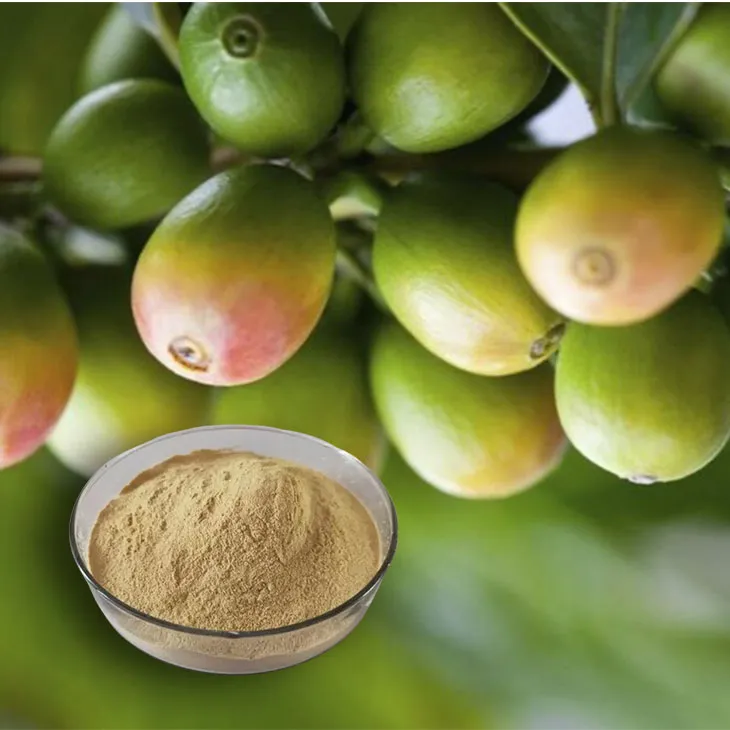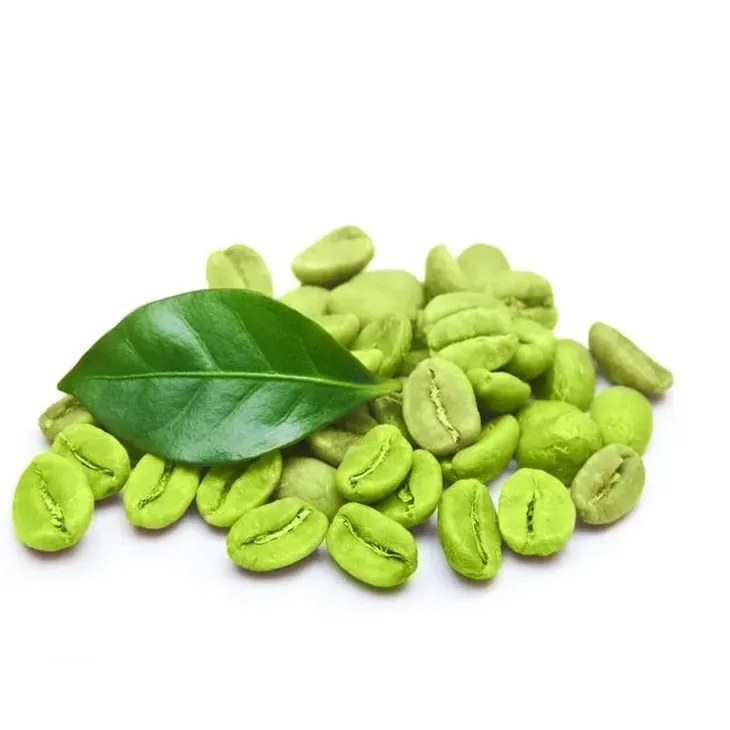- 0086-571-85302990
- sales@greenskybio.com
The flavor of mature green coffee beans and natural green coffee bean extract.
2024-11-12

Introduction
Coffee has been a beloved beverage around the world for centuries. While most people are familiar with the roasted coffee beans and the rich flavors they produce, the world of mature green coffee beans and their extracts offers a whole new dimension of exploration. In this article, we will delve into the various aspects of these, including how cultivation affects their flavor, the different extraction methods, and the health - related implications. Understanding these elements can provide a deeper appreciation for the coffee industry and the significance of these components within it.

Cultivation and Its Impact on Flavor
Origin and Climate
The origin of coffee beans plays a crucial role in determining their flavor. Coffee is predominantly grown in regions along the equator, known as the "Coffee Belt." Countries like Brazil, Colombia, Ethiopia, and Vietnam are major coffee - producing nations. The climate in these regions, with its specific temperature, rainfall, and altitude, significantly impacts the flavor of the green coffee beans.
For example, coffee beans grown at higher altitudes tend to have a more complex and nuanced flavor profile. The cooler temperatures and slower growth rate at altitude allow for the development of more delicate flavors. In contrast, beans grown in warmer, lower - altitude regions may have a bolder, more straightforward flavor.
Soil Quality
The type and quality of the soil also influence the flavor of green coffee beans. Well - drained, fertile soils rich in organic matter are ideal for coffee cultivation. Soils with a particular mineral composition can impart unique flavors to the beans. For instance, coffee grown in volcanic soil may have a slightly earthy or mineral - like flavor note, which adds depth to the overall flavor profile.
Cultivar Varieties
There are numerous coffee cultivars, each with its own genetic makeup that affects flavor. Arabica and Robusta are the two most common species. Arabica beans are generally known for their higher quality and more complex flavors, often described as having fruity, floral, or chocolaty notes. Robusta beans, on the other hand, have a more bitter and earthy flavor and are often used in blends or for instant coffee.
Within the Arabica species, there are further varietals such as Bourbon, Typica, and Geisha. These varietals can vary in flavor, with Geisha, for example, being highly prized for its unique floral and tea - like flavors.

Flavor Profile of Mature Green Coffee Beans
Raw Green Bean Characteristics
When freshly harvested, mature green coffee beans have a distinct, grassy aroma. They also possess a certain level of acidity, which is different from the acidity in roasted coffee. This acidity is more in the form of a fresh, green - like tartness. The flavor is relatively mild compared to roasted beans but has a certain earthiness and a hint of nuttiness.
Potential Flavor Development during Storage
During storage, green coffee beans can undergo some changes in flavor. If stored properly in a cool, dry place, they can maintain their freshness for an extended period. However, improper storage can lead to off - flavors. For example, exposure to moisture can cause the beans to develop a musty or moldy flavor, while exposure to high temperatures can accelerate the aging process and result in a flat or stale flavor.

Extraction Methods for Green coffee bean Extract
Solvent - Based Extraction
One common method for extracting Green coffee bean Extract is solvent - based extraction. This involves using solvents such as ethyl acetate or supercritical CO2. Ethyl acetate extraction is often used in the food industry. The solvent is used to dissolve the desired compounds from the green coffee beans, and then the solvent is removed, leaving behind the extract.
Supercritical CO2 extraction has the advantage of being a relatively clean and efficient method. It can selectively extract certain compounds while leaving behind unwanted ones. This method is often favored for producing high - quality Green coffee bean Extracts with a pure flavor profile.
Water - Based Extraction
Water - based extraction is another option. This method involves steeping the green coffee beans in water to extract the soluble compounds. The resulting extract can be further processed to concentrate the desired components. Water - based extraction is a more natural approach and can produce extracts with a different flavor profile compared to solvent - based methods. However, it may also extract more impurities along with the desired compounds, requiring additional purification steps.
Health - Related Implications
Antioxidant Properties
Green coffee beans are rich in antioxidants, particularly chlorogenic acid. These antioxidants play an important role in neutralizing free radicals in the body, which are associated with various diseases such as cancer, heart disease, and neurodegenerative disorders. The antioxidant content in green coffee bean extract may be higher than in roasted coffee, as some of these compounds can be degraded during the roasting process.
Potential for Weight Management
Some studies have suggested that green coffee bean extract may have potential benefits for weight management. Chlorogenic acid has been shown to interfere with the absorption of carbohydrates in the gut, which could potentially lead to reduced calorie intake. Additionally, it may increase the body's metabolism, although more research is needed to fully understand the mechanisms and effectiveness of green coffee bean extract in weight loss.
Blood Sugar Regulation
There is also evidence to suggest that green coffee bean extract may help in regulating blood sugar levels. Chlorogenic acid may improve insulin sensitivity, which is crucial for maintaining normal blood sugar levels. This could be beneficial for individuals with diabetes or those at risk of developing diabetes.
Significance in the Coffee Industry
The study and utilization of mature green coffee beans and their extracts are of great significance in the coffee industry. For coffee producers, understanding the factors that affect the flavor of green coffee beans allows them to optimize their cultivation and harvesting practices to produce higher - quality beans.
For the specialty coffee market, the unique flavors of green coffee beans and their extracts offer new opportunities for creating novel coffee products. These can range from green coffee bean - based beverages with a distinct flavor profile to the use of green coffee bean extract in food and cosmetic products.
Moreover, the health - related aspects of green coffee bean extract are driving research and development in the industry. As consumers become more health - conscious, products containing green coffee bean extract are likely to gain more popularity, further fueling innovation in the coffee industry.
Conclusion
In conclusion, the world of mature green coffee beans and natural green coffee bean extracts is rich and complex. From the influence of cultivation on flavor to the various extraction methods and the important health - related implications, there is much to explore and discover. As the coffee industry continues to evolve, these aspects will play an increasingly important role in shaping the future of coffee production, consumption, and innovation.
FAQ:
Q1: How does cultivation affect the flavor of mature green coffee beans?
Cultivation factors such as altitude, soil type, and climate play crucial roles in shaping the flavor of mature green coffee beans. Higher altitudes often result in slower bean maturation, leading to more complex and nuanced flavors. The soil type can influence the nutrient uptake of the coffee plants, which in turn affects the flavor profile. For example, volcanic soil may impart unique earthy and mineral - like flavors. Climate conditions like temperature and rainfall patterns also impact the development of the beans. Adequate rainfall at the right times and cooler temperatures can enhance the acidity and brightness of the flavor.
Q2: What are the common extraction methods for natural green coffee bean extract?
One common method is solvent extraction. In this process, solvents such as ethanol or ethyl acetate are used to dissolve the active compounds in the green coffee beans. Another method is supercritical fluid extraction, which uses supercritical carbon dioxide. This method is favored as it can extract the desired compounds without leaving behind harmful residues. Cold - press extraction is also used, where mechanical pressure is applied to the beans to extract the juice, which contains the extractable components. Each method has its own advantages and may result in different qualities of the green coffee bean extract.
Q3: What are the potential health - related implications of consuming mature green coffee beans or their extracts?
Green coffee beans and their extracts are often associated with potential health benefits. They contain compounds like chlorogenic acid, which has antioxidant properties. Antioxidants can help combat oxidative stress in the body, potentially reducing the risk of chronic diseases such as heart disease and certain cancers. Some studies also suggest that green coffee bean extract may aid in weight management by affecting metabolism. However, more research is still needed to fully understand the extent and mechanisms of these health - related implications.
Q4: How can one distinguish high - quality mature green coffee beans?
High - quality mature green coffee beans can be distinguished in several ways. Visual inspection is one aspect. The beans should be uniform in size and color, with a vibrant green hue indicating freshness. Aroma also plays a key role. High - quality beans often have a fresh, grassy, or slightly fruity aroma. Another factor is density. Beans with higher density usually indicate better quality as they are likely to be more fully developed. Additionally, the origin of the beans can be an indicator, as certain regions are known for producing high - quality coffee beans.
Q5: Are there any differences in flavor between different varieties of mature green coffee beans?
Yes, there are significant differences in flavor between different varieties of mature green coffee beans. For example, Arabica beans are known for their complex flavors, often having a higher acidity, and may exhibit floral, fruity, or chocolatey notes. Robusta beans, on the other hand, tend to have a stronger, more bitter flavor with a lower acidity and more earthy and nutty undertones. Other varieties like Liberica also have their own unique flavor profiles, which can range from smoky to spicy, depending on the cultivation conditions.
Related literature
- The Flavor Chemistry of Coffee"
- "Green Coffee Bean: From Cultivation to Health Benefits"
- "Extraction Techniques for Coffee Bean Components"
- ▶ Hesperidin
- ▶ citrus bioflavonoids
- ▶ plant extract
- ▶ lycopene
- ▶ Diosmin
- ▶ Grape seed extract
- ▶ Sea buckthorn Juice Powder
- ▶ Beetroot powder
- ▶ Hops Extract
- ▶ Artichoke Extract
- ▶ Reishi mushroom extract
- ▶ Astaxanthin
- ▶ Green Tea Extract
- ▶ Curcumin Extract
- ▶ Horse Chestnut Extract
- ▶ Other Problems
- ▶ Boswellia Serrata Extract
- ▶ Resveratrol Extract
- ▶ Marigold Extract
- ▶ Grape Leaf Extract
- ▶ blog3
-
Cranberry Plants and Skin - care Products.
2024-11-12
-
Kupilu Extract
2024-11-12
-
Cranberry Extract
2024-11-12
-
Camu Camu Extract
2024-11-12
-
Lily extract
2024-11-12
-
Tinospora cordifolia extract
2024-11-12
-
Nettle leaf extract
2024-11-12
-
Chia Seed Powder
2024-11-12
-
Chaste Berry Extract
2024-11-12
-
melatonin extract
2024-11-12
-
Senna Leaf Extract
2024-11-12





















